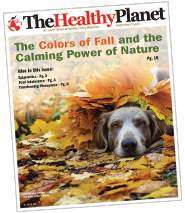Article courtesy of the Clean Air Partnership
Do you idle your personal vehicle in drive-thrus, parking lots or drop-off zones? Consider this: Idling vehicles emit 20 times more pollution than a car traveling at 30 mph. And the pollution released from vehicle idling includes air toxics, which are known to cause cancer, respiratory and reproductive effects, birth defects or other serious health concerns. Luckily, there are a number of ways to reduce vehicle idling, and they come with some very positive environmental and health impacts.
While you may not always be able to avoid idling in traffic tie-ups and at traffic signals, there are many opportunities for you to make the choice not to idle. These include:
- Turning off your ignition when you have to wait for more than 10 seconds. Idling for just 10 seconds wastes more gas than restarting the engine.
- Not “warming up” your vehicle. Modern engines don’t need more than a few seconds of idle time before they are safe to drive. As such, the best way to “warm up” a car is to drive it.
- Planning your trips to avoid construction zones and traffic tie-ups. Resources like MoDOT’s Gateway Guide, at www.gatewayguide.com, can alert you to high-traffic areas before you leave the house, allowing you to choose an alternate and idle-free route.
- Making the choice to turn your key and be idle-free keeps our air cleaner and improves the health of individuals across the region by helping them breathe easier. In fact, for every 10 minutes your engine is off, you’ll prevent one pound of carbon dioxide from being released into our air. And since idling for 10 minutes a day wastes 27 gallons of fuel a year, choosing not to idle saves drivers fuel and money.
“The time we spend behind the wheel greatly affects our air quality, and choosing not to idle is a simple emissions-reduction action we can all take to help improve air quality conditions in our region,” said Susannah Fuchs, Director, Clean Air, for the American Lung Association in Missouri and spokesperson for the Clean Air Partnership.
Local businesses, schools, governmental agencies and other organizations can also get involved in the “no-idle” effort by implementing “no-idle” policies and posting “no-idle” signs in parking lots, drop-off zones and delivery areas. The Clean Air Partnership provides these signs free of charge. If your organization or school is interested in obtaining a “no-idle” sign, or learning more about no-idling initiatives, contact Susannah Fuchs at 314-449-9149 or send an email to Susannah.Fuchs@lung.org.
To learn more about additional steps you can take to help improve air quality, visit the Clean Air Partnership’s newly-updated website at www.cleanair-stlouis.com, like the Clean Air Partnership on Facebook or follow us on Twitter @gatewaycleanair.


